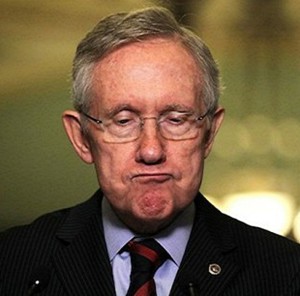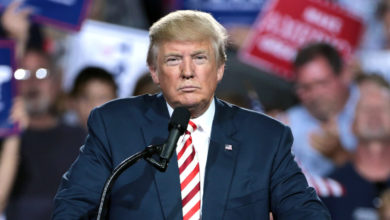The Republicans have taken control of the Senate with a resounding victory over the Democrats in most key races of the 2014 midterm election. In addition, there will likely be a historic Republican majority in the House of Representatives. The stakes were high, and tremendous amounts of money were poured into the campaign that significantly altered the composition of the highest organs of the capitalist state.
The first thing that needs to be said about the 2014 midterm elections is that they are not in fact “democratic,” as all sectors of the ruling class profess. The capitalists own the major media outlets, have access to the candidates and determine who is viable and who is not through their campaign donations. Although revolutionaries often intervene in the electoral process for various strategic reasons, in and of themselves they are not a way to radically transform society because in almost all cases the only candidates with a chance at winning are fundamentally loyal to capitalism.
However, elections are very instructive when it comes to understanding the various fault lines between members of the ruling class, as well as the overall stability of their system. The elections are not just drama to distract the masses of oppressed people – it is an important mechanism the bourgeoisie uses to help determine their mid and long-term strategy.
Different groups of capitalists have different priorities and political inclinations, and back candidates who reflect this. What do the results of the 2014 elections tell us about the balance of forces within the ruling class?
The traditional analysis coming out of the capitalist media is that the Republicans won by capitalizing on the unpopularity of President Obama and favorable demographics. The electorate in mid-term elections tends to be more white, older and wealthier than voters in years when there is a presidential election. This is especially true in the states where there were key Senate races, which are also some of the places where reactionary ideas are the most entrenched.
However, this surface-level analysis misses the main trend in bourgeois politics.
The electoral expression of the crisis of capitalism
One of the key functions of the state under capitalism is to mediate conflicts between different members and sectors of the ruling class. When times are good and profits are high, this is a relatively easy task because there is no need to take drastic steps in one direction or another.
But this is a period of profound crisis. There has been no real recovery from the 2007-8 financial collapse, even though the recession – the worst since the Great Depression – is technically over. U.S. imperialism is losing its uncontested dominance of the world as rising powers challenge its dictates.
The ruling class is scattered, with widely divergent views about how to stabilize the system competing for influence. While we are a long way off from a revolutionary crisis, their state is becoming more and more dysfunctional. This contest is reflected in the electoral arena, and may intensify now that Republicans control both chambers of Congress.
Setbacks for the Tea Party
After taking emergency measures to prevent the total collapse of their system in the wake of the economic crisis – including the infamous bailouts – the capitalists turned their attention to political stability. As has historically been the case, a section of the ruling class looked to the far right wing. The Tea Party “movement” emerged with funding from some of the country’s most powerful capitalists and sought to push U.S. politics in an extremely reactionary direction.
The Tea Party’s base of support is composed of the more privileged layers of society that fear a dramatic decline in their standard of living, takes on the appearance of a mass movement and is rabidly racist. These are some of the key characteristics of fascism, although the Tea Party does not advocate a break with the existing constitutional/electoral order. The Tea Party is a semi-fascist grouping.
However, it was not and is not a majority force in ruling class circles. While initially welcomed by the leadership of the Republican Party, which was catapulted to power in the House of Representatives in the Tea Party wave of 2010, it soon started causing headaches. Composed of some of the most ideologically hardened elements of bourgeois politics, the Tea Party aggressively opposed any moves by more seasoned right-wing politicians to compromise with the Democrats.
The Tea Party successfully insisted that the Republicans follow this hardline approach when it came to fiscal policy. Ever since the 2010 elections, the capitalist state has been unable to fulfil one of its basic functions – passing a federal budget. Even though the Democrats made numerous proposals that would devastate the social gains won by poor and working people, it was never enough.
This culminated in the “government shutdown” of 2013. For over two weeks in October, most federal agencies halted all but their most essential operations for lack of funding. The Republican leadership largely disagreed with this tactic, but the Tea Party was able to leverage their popularity to force them to go through with the shutdown.
Meanwhile, the old guard of the Republican Party was in disarray. The Republican primary for the 2012 presidential election was a parody of itself. Every few weeks a new frontrunner would emerge, including obviously unelectable figures like Newt Gingrich and Rick Santorum. A great deal of money and energy was expended in this internal fight, weakening the right wing when it came to taking on the Democrats.
After Mitt Romney’s convincing defeat, the more “moderate” Republicans regrouped and began planning a counter-offensive. Less than two months after President Obama was sworn in for his second term, the Chairman of the Republican National Committee published a 100-page document that called for a move towards the center. It advocated support for immigration reform, greater sensitivity on issues affecting women and an emphasis on building a base in Black, Latino and Asian communities.
Republican strategist Mike Murphy remarked at the time that, “The most important message from the campaign was that the electorate is changing and we have to be in front of that, not behind it … the most important thing is: how do we appeal to them with the policy agenda of a modernized conservatism?” Alex Castellanos, another prominent Republican operative, was more blunt: “We ran out of white voters.”
The U.S. Chamber of Commerce, one of the biggest Republican campaign donors, and others signaled that they were prepared to bankroll the anti-Tea Party faction. They followed through on their commitment. For example, in the first two months of 2014 one fifth of all money from the extremely influential “super PACs” – including ones aligned with the Democratic Party – was spent by conservative groups attacking other Republicans.
Except for the surprise defeat of House Majority Leader Eric Cantor, this strategy was a sweeping success. The Tea Party was unable to unseat a single Republican incumbent Senator, despite coming extremely close in Alabama. In this context, the new Republican majority in the Senate is a setback for the Tea Party and a major boost for the conservative establishment.
Breakdown of the Democrats’ chain of command
The Democratic Party was the other big loser of the 2014 midterm.
When Barack Obama was elected president in 2008, he was overwhelmingly popular. Poor and working people were relieved that the days of the hated George W. Bush were over, and the election of the first Black president seemed to represent a dramatic break with the past. The ruling class approved as well – he brought renewed legitimacy and faith in the system at a time when everything seemed to be collapsing.
What a difference six years makes. With approval ratings in the low 40s – much lower in most of the states key to control of the Senate – the Obama administration no longer enjoys anywhere near the confidence it commanded after it initially took office. Even in the most oppressed communities where people are rightfully disgusted at the racism of the right wing, the enthusiasm is dampened.
For the capitalist class, the Obama administration has proven incapable of restoring U.S. capitalism/imperialism to the unchallenged superpower status it enjoyed in the years following the overthrow of the Soviet Union. This may be an impossible task, but the elite are nevertheless upset.
As a consequence, the most prominent Democratic candidates distanced themselves from the president or even engaged in open criticism. Alaska Senator Mark Begich ran an advertisement saying, “I took on Obama to open up drilling in the Arctic.” Senator Kay Hagan from North Carolina’s final ad stated, “She [Hagan] stood up to President Obama to put North Carolina first on trade, energy and keeping our military strong.” Alison Grimes, who lost to Senator Mitch McConnell of Kentucky, even refused to publically admit that she voted for Obama in the presidential election. All three are Democrats who received tremendous resources from the national party.
An incumbent president is traditionally considered to be the leader of their party, making this level of direct criticism very rare. In the closing weeks of the election, President Obama showed his displeasure at this insubordination by making public statements that directly contradict these Senate candidates’ messaging. In a face-saving measure, Obama finally did get to campaign for Democrats towards the end of the race, but only for gubernatorial candidates that were almost certain to win.
Bush vs. Clinton again?
Although the Tea Party is weakened, it is very possible that the dysfunction in the capitalist state will intensify now that the White House will face opposition from both the Senate and the House of Representatives. The Democratic Party will seek to fill its leadership vacuum, and the Republican establishment will need to consolidate its victory over the Tea Party. The ruling class as a whole will continue to search for solutions to seemingly intractable economic and geopolitical crises.
In this chaotic scenario, it appears that the capitalists are becoming more and more dependent on a small number of tried-and-true political dynasties. In yet another sign of the utter bankruptcy of the U.S. electoral system, the 2016 presidential election very well may end up being another Bush versus another Clinton.
Barring an unforeseen disaster, Hillary Clinton is certain to be the Democrats’ nominee. With Chris Christie tainted by the “bridge-gate” scandal, the Republican leadership is beginning to unify around former Florida Governor Jeb Bush (George W.’s brother). While he has not yet announced whether he will run or not, if he enters the primary he will instantly become a frontrunner.
Poor and working people need to attack their enemies not when they are strongest, but when they are weakest. The growing divides between different sectors of the ruling class opens up greater space for a mass movement to challenge the countless injustices of the system. Right now the politicians are frustrated; it would be better if they were terrified.







